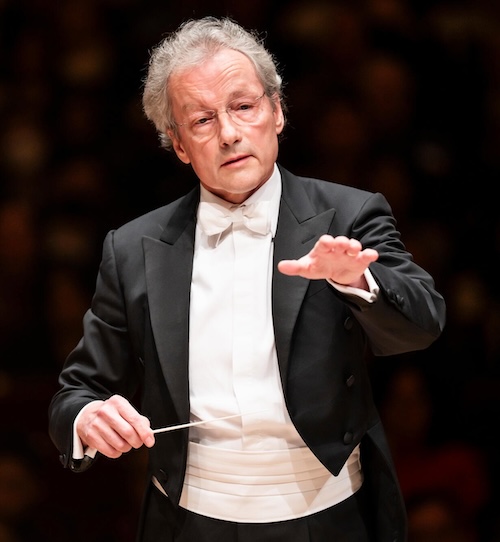Vienna Philharmonic makes its lineage manifest with extraordinary Mahler

Franz Welser-Möst conducted the Vienna Philharmonic in Mahler’s Symphony No. 9 Friday night at the Kravis Center in West Palm Beach. Photo: Chris Lee
A West Palm Beach audience on Friday night experienced the towering power of the Vienna Philharmonic, an ensemble ranked at the very top of the world’s orchestras.
It was the first of two concerts at the Kravis Center in which the historic ensemble is performing music intimately connected with Vienna, the capital city of classical music’s golden age.
On Friday they played a single work, the Symphony No. 9 of Gustav Mahler, who had served as the Vienna Philharmonic’s conductor and whose Ninth Symphony received its posthumous premiere by the orchestra in 1912. For a Saturday matinee, the orchestra will perform the Symphony No. 9 of Anton Bruckner, who spent his peak composing years in the city, and Three Pieces for Orchestra by Alban Berg, who was born and spent most of his life there.
In a packed hall Friday evening, conductor Franz Welser-Möst led the orchestra through a gripping and sumptuous performance of Mahler’s final completed symphony.
What was striking about the performance wasn’t its technical perfection, which was not surprising in an orchestra of this caliber. What stood out was the involvement of the individual musicians and the immensely high quality of each section.
Each violinist seemed to play with the commitment of a soloist performing a concerto, while blending with the others for flawless ensemble precision. The brass section, which in some orchestras can sound like a hostile army attacking the other instruments, achieved a burnished caramel sound, blending with the other sections to produce a rich orchestral texture that deeply suited this work..
In the opening Andante, strings played with a rich vibrato and edge-of-the-seat intensity, whether digging into their instruments’ lowest string or soaring to the upper register. Particularly evocative were mysterious passages where the beat of the music seemed to melt away, with just a few mutterings of muted trumpet or horn breaking the surface. The orchestra’s horn section was terrific, producing rich, golden sounds and capable of sustained pianissimo passages of unearthly impact.
The rustic Ländler of the second movement came off with the earthy thumping of a country band, but as the music sped up achieved a surprising grace. The orchestra leaned into the sharp contrasts of the Rondo-Burleske, playing with hard-driving brutality through most of it, with moments of sardonic humor. But as the movement pivoted to music of nobility and grace, there were passages of delicate tenderness in the strings.
Welser-Möst paused and stood silently before raising his baton to open the final Adagio, considered by many to be one of Mahler’s highest achievements.
The movement opens with some of the greatest string music in the repertory. Welser-Möst took a relatively quick pace, with the effect that the music gained turbulence and passion without losing any of its weight. Strings played with a velvet richness, achieving an edgy intensity on a two-note motif that suddenly leaps high to the violins’ upper range.
Just as moving were the quiet passages. Welser-Möst powered down the immense orchestra to a volume as low as any ensemble is likely to achieve in that hall. Pianissimo brass and strings made the final minutes intimate and personal, after so many symphonic fireworks, with the work dying away in wisps of strings.
The cheers and applause, louder, more spontaneous and more vigorous than the ovations that have become routine at South Florida concerts, showed that many people that evening knew they had attended a memorable concert.
The Vienna Philharmonic will perform 2 p.m. Saturday at the Kravis Center in West Palm Beach, playing Bruckner’s Symphony No. 9 and Berg’s Three Pieces for Orchestra. kravis.org
Posted in Performances
Leave a Comment
Sat Mar 9, 2024
at 11:08 am
No Comments